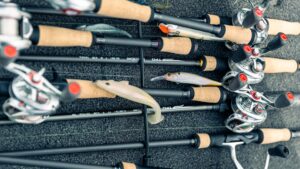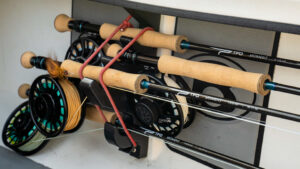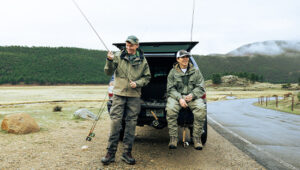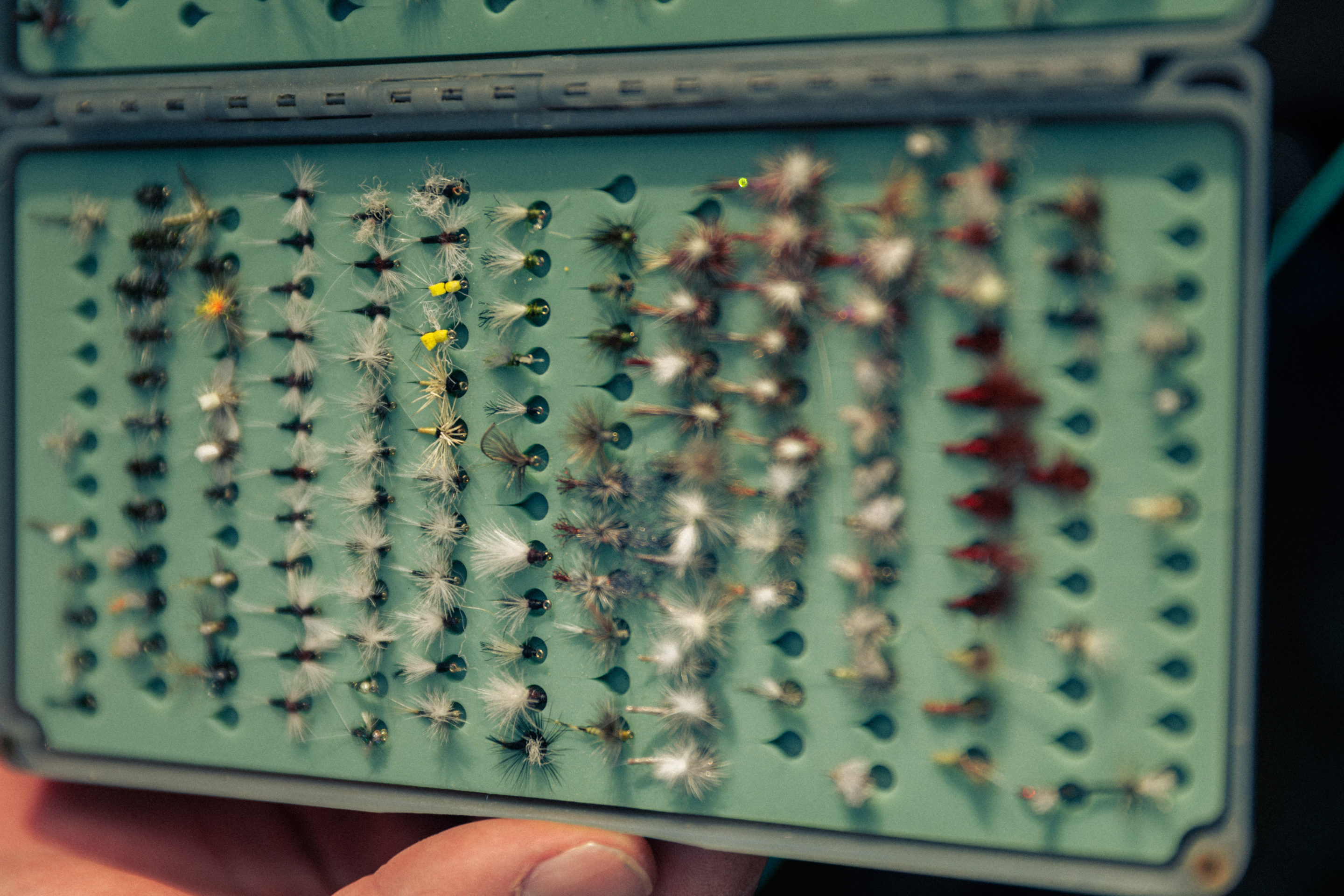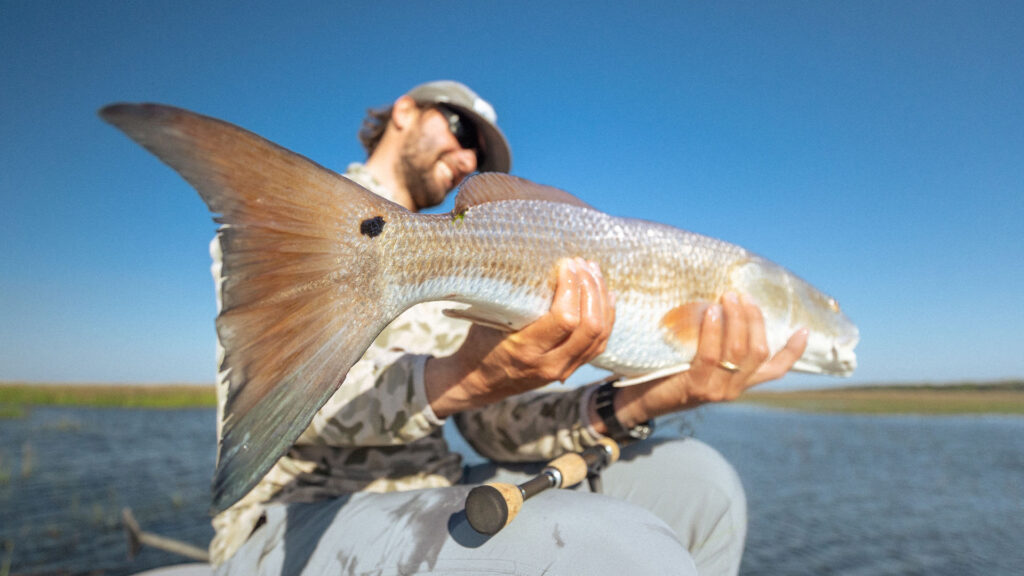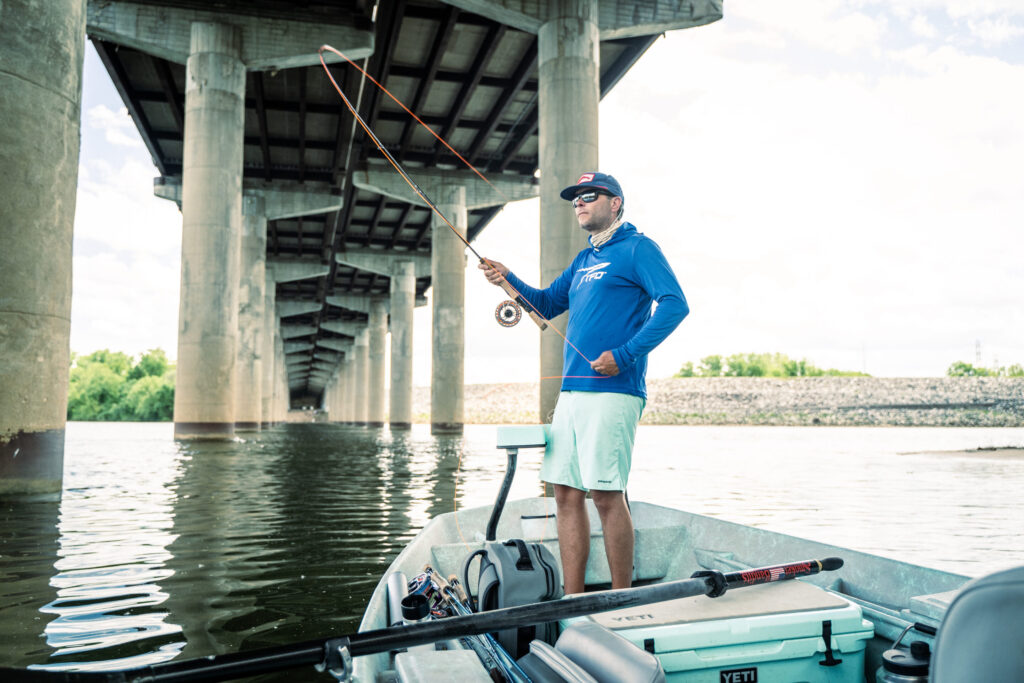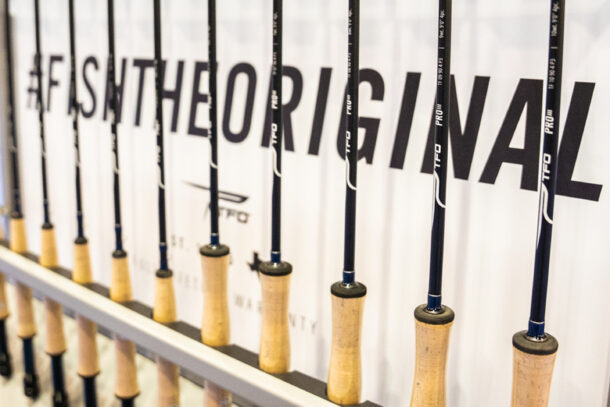Presentation trumps fly selection. You’ll catch more trout with the wrong fly but the right presentation than you will with the right fly but the wrong presentation. Don’t get me wrong; having the right fly is important especially when a hatch tightens the trout feeding focus to a single prey type. But lacking a hatch, trout feed more indiscriminately than most of us realize.
Presentation begins with the rod and the ability to cast it well. Landing a dry fly gently on the water not only requires the correct rod but also a bit of skill and practice. Skilled anglers also appreciate the need for line management. You need to maintain enough slack to get a drag free drift, but not so much that you end up missing fish.
While much has already been written about casting, mending and slack management, in order to maximize presentation you need also to address a very important but often overlooked detail- the leader. Equally overlooked is the need to match the right leader to the right fly line (and rod) for the circumstance at hand. Ideally, you’ll have one rod/line/leader combination to fish a small stream and a different set up to fish a large river.
The Perfect Leader
Well, I guess there’s no such thing as a perfect leader, especially not a ‘one-size-fits-all’ type of thing that also suits every angler. I do think there’s a best leader, however, at least in my hands, but my leader choice for a small spring creek is much different than it is for a larger river because the goals in each circumstance are different. On a small spring creek, the dry fly needs to land softly with minimal disturbance to the water and minimal disruption of trout feeding. Temperamental or spooky trout usually require a longer leader that lands with a bit of slack close to the fly for a drag free drift. Fishing larger rivers requires delivering the fly at greater distances, with less focus on finesse. Managing line and long-range mending ensure an ideal drift.
The leader serves a vital function; it transmits energy generated by the casting stroke from the fly line to the fly. The line unfurls and the leader follows suit expending the energy in the process. Commercially manufactured leaders follow a fairly uniform formula- a thicker butt section, a relatively short taper section (graduated reduction in diameter) and a terminal portion of consistent diameter to which we tie tippet and fly. With this design, however, a failure of energy transfer often occurs at the taper. The short, aggressive reduction in diameter of the taper section invites an energy transfer failure, and the cast will collapse there instead of transmitting the energy to its completion. A collapse at the taper is not where we want excess coils of slack.
We can improve upon this design, but you have to be willing to make your own leaders. Not only will a hand tied leader with a longer and more gradual reduction in diameter allow for more efficient energy transfer, but we can also design the leader so that it collapses exactly where we want it- close to the fly. Many of our fly fishing forefathers knew this and most of their early leader formulas still work today. George Harvey, Joe Humphrey, A.K. Best and many others developed their favorite leaders. When I first began experimenting with different formulas, I borrowed much from their knowledge and also picked the brains of anglers like Ed Engle and Devin Olsen.
The small stream leader I currently use starts with a butt section of twenty pound Chameleon with incrementally shorter and lighter sections of chameleon, reducing to four pound (.oo7”) just before terminating at a tippet ring. The hard nylon makeup of chameleon makes it an ideal choice to transmit energy throughout the length of the leader. After the tippet ring, several feet of soft nylon such as Scientific Anglers Absolute Stealth Trout (6X-.007”) connects to the fly. The combination of a diameter reduction and the change from hard nylon to soft material causes the leader to collapse here, landing with curves of slack near the fly, just where we need it for a drag free drift.

Leader formula for a small stream or creek. // Photo: Jason Randall
For larger rivers, heavier materials throughout the leader help maximize distance. Start with twenty-five pound chameleon with incremental reductions to a final section of five pound nylon terminating at a tippet ring. To the ring, add a few feet of appropriate sized soft tippet.

Leader formula for larger rivers and tailwaters. // Photo: Jason Randall
The Right Line
You need the right fly line to get the best performance from your leader. On a small stream or spring creek, casting distance is usually not much more than thirty feet, or so. It’s not that easy to turn over a fifteen-foot leader when you’re only using fifteen or twenty feet of the fly line head, but this is when new lines like SA Amplitude Creek Trout really shine. The shorter but more aggressive head (only thirty feet long) not only ensures enough energy reaches the leader to turn over the fly with long leaders, but also makes roll casting easier, both of which come in handy on small water. My larger water line choice has a much longer head to help with the longer casts, but this also allows for mending a lot of line to ensure a good drift. SA Amplitude Smooth Infinity with a fifty foot head performs well in this situation.
The Right Rod
I like a bit softer (slower) rod for small water because these rods are geared towards presentation rather than distance. They also roll cast better in my hands than faster (stiffer) rods, especially when paired with the right line. Try the TFO Blue Ribbon on small water. I like faster rods for fishing larger rivers not only for the added distance, but also for line management. I use the TFO LK Legacy or Axiom ll for this type of water.
It’s not as hard to tie your own leaders as you think and it’s certainly worth the effort. One thing’s for certain; you have to like tying knots, but it’s something to do in the off-season. I like to tie my leaders while watching the Bears play football on TV since there’s not much to distract me from my knots. Hopefully, my leaders will perform better.

Jo Randall showing off a beautiful brown trout caught on a small stream using the creek leader formula.
Blog written by TFO Advisor Jason Randall.
![]()
